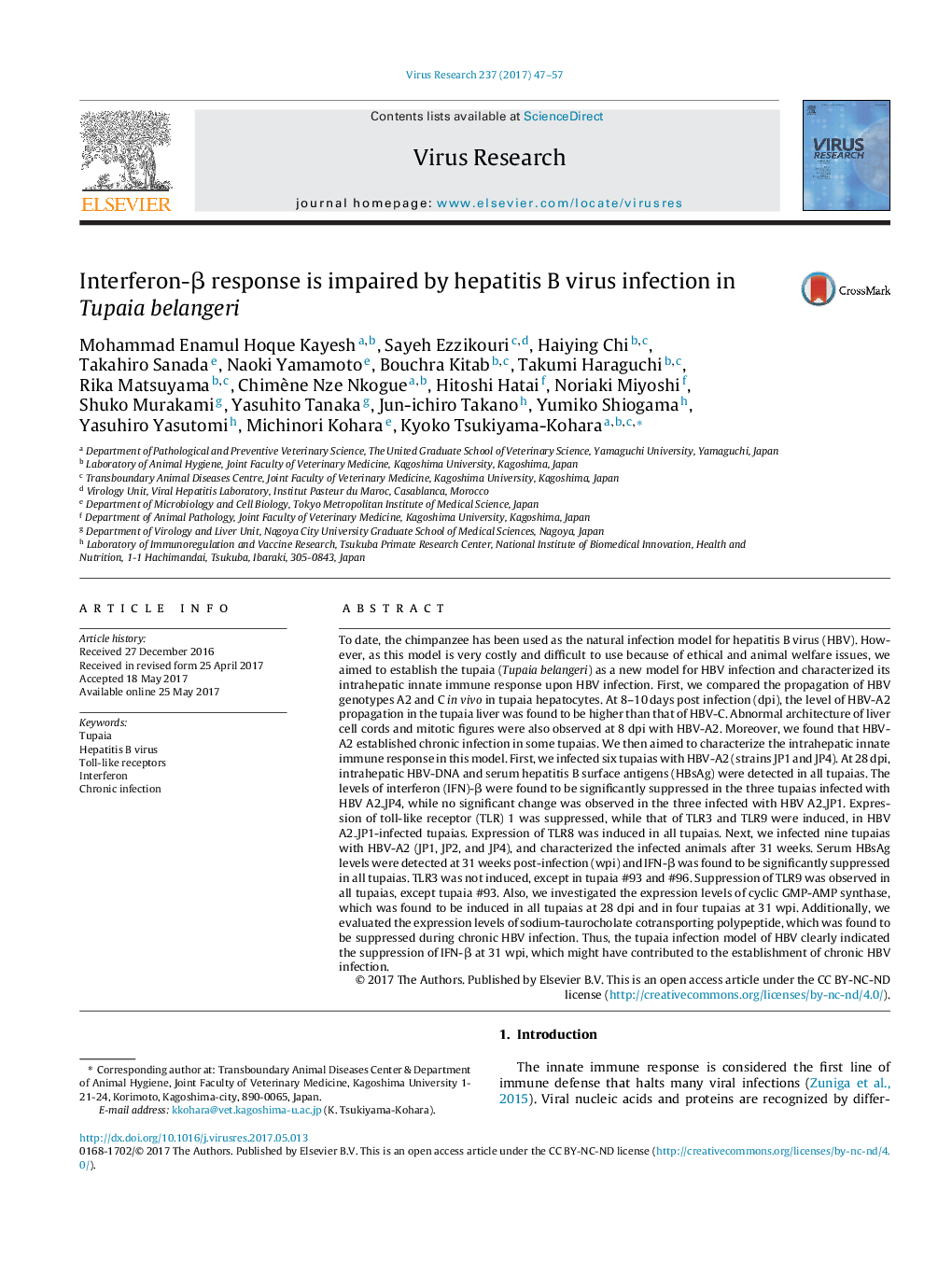| Article ID | Journal | Published Year | Pages | File Type |
|---|---|---|---|---|
| 5675532 | Virus Research | 2017 | 11 Pages |
â¢HBV-A2 can establish chronic infection in tupaia.â¢A quantitation system for innate immune response of tupaia has been established.â¢Response of IFN-β in HBV-A2-infected tupaia was suppressed.â¢NTCP expression was suppressed during chronic HBV infection.â¢Tupaia can provide new insights in the study of HBV chronic infection.
To date, the chimpanzee has been used as the natural infection model for hepatitis B virus (HBV). However, as this model is very costly and difficult to use because of ethical and animal welfare issues, we aimed to establish the tupaia (Tupaia belangeri) as a new model for HBV infection and characterized its intrahepatic innate immune response upon HBV infection. First, we compared the propagation of HBV genotypes A2 and C in vivo in tupaia hepatocytes. At 8-10 days post infection (dpi), the level of HBV-A2 propagation in the tupaia liver was found to be higher than that of HBV-C. Abnormal architecture of liver cell cords and mitotic figures were also observed at 8 dpi with HBV-A2. Moreover, we found that HBV-A2 established chronic infection in some tupaias. We then aimed to characterize the intrahepatic innate immune response in this model. First, we infected six tupaias with HBV-A2 (strains JP1 and JP4). At 28 dpi, intrahepatic HBV-DNA and serum hepatitis B surface antigens (HBsAg) were detected in all tupaias. The levels of interferon (IFN)-β were found to be significantly suppressed in the three tupaias infected with HBV A2_JP4, while no significant change was observed in the three infected with HBV A2_JP1. Expression of toll-like receptor (TLR) 1 was suppressed, while that of TLR3 and TLR9 were induced, in HBV A2_JP1-infected tupaias. Expression of TLR8 was induced in all tupaias. Next, we infected nine tupaias with HBV-A2 (JP1, JP2, and JP4), and characterized the infected animals after 31 weeks. Serum HBsAg levels were detected at 31 weeks post-infection (wpi) and IFN-β was found to be significantly suppressed in all tupaias. TLR3 was not induced, except in tupaia #93 and #96. Suppression of TLR9 was observed in all tupaias, except tupaia #93. Also, we investigated the expression levels of cyclic GMP-AMP synthase, which was found to be induced in all tupaias at 28 dpi and in four tupaias at 31 wpi. Additionally, we evaluated the expression levels of sodium-taurocholate cotransporting polypeptide, which was found to be suppressed during chronic HBV infection. Thus, the tupaia infection model of HBV clearly indicated the suppression of IFN-β at 31 wpi, which might have contributed to the establishment of chronic HBV infection.
